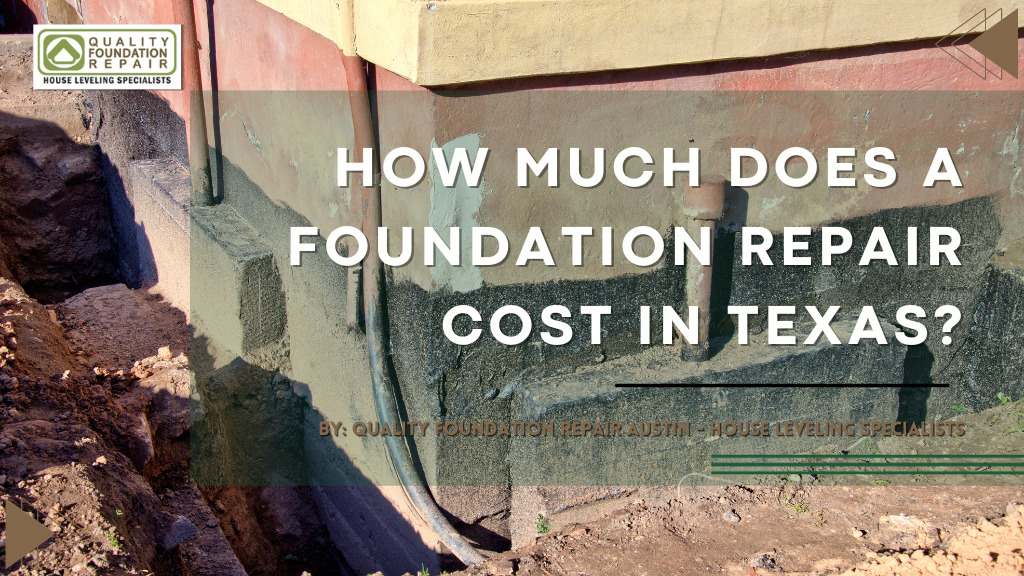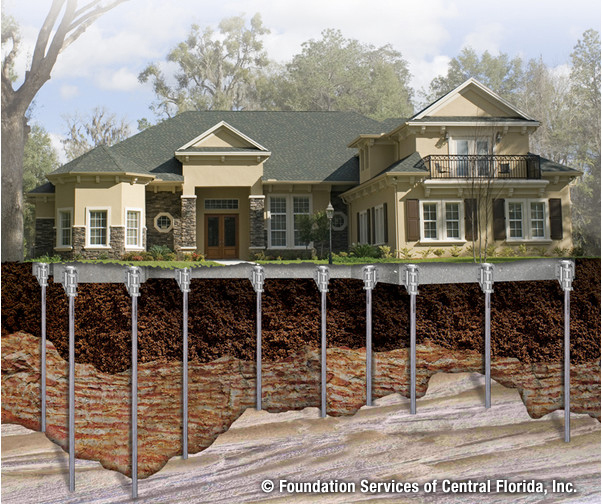Discovering the Conveniences of Timely Foundation Repair Oklahoma for Your Home
Discovering the Conveniences of Timely Foundation Repair Oklahoma for Your Home
Blog Article
Exploring Various Techniques of Foundation Repair Work for Various Soil Types
Structure fixing is a crucial element of preserving architectural stability, specifically when considering the varied obstacles positioned by various soil kinds. The intricacy of dirt behavior under differing conditions necessitates a tailored method to fix, making sure optimum options such as helical piers for unstable soils or chemical grouts for natural layers.
Comprehending Dirt Kinds
Dirt types play a vital duty in the security and long life of structure foundations, making it vital for homeowners and building experts to recognize their features and behavior. The communication between dirt and structure can establish the architectural honesty of a building. There are a number of dirt kinds, each with unique physical properties that influence exactly how structures are designed and preserved.
Granular soils, such as sand and crushed rock, supply great drainage and are often thought about stable. They have high load-bearing capacities, which can sustain larger structures. These soils can shift if not compressed effectively, leading to potential settlement problems. On the other hand, cohesive soils like silts and clays exhibit different behaviors. These dirts have a tendency to keep dampness, and their load-bearing capacity can vary dramatically with changes in dampness web content.
Rocky dirts, recognized for their toughness and security, offer exceptional support for structures but may need specific equipment for excavation. Conversely, loamy soils, which are a well balanced blend of silt, sand, and clay, frequently give desirable conditions for foundation assistance because of their modest water drainage homes.

Recognizing these soil kinds is crucial for picking proper structure repair service techniques, making certain the durability and security of structures gradually.
Obstacles With Expansive Clay
Among the different soil types, large clay offers special obstacles for foundation security as a result of its propensity to go through substantial quantity changes with wetness variant. This kind of soil swells when damp and contracts when completely dry, which can exert considerable pressure on frameworks. These variations can lead to structure cracking, heaving, and settlement concerns, posing substantial risks to the structural stability of structures.
The difficulties with extensive clay are intensified by its plasticity index, which measures the dirt's ability to change shape and quantity. A high plasticity index shows higher possibility for movement, raising the chance of damages to structures. This is especially troublesome in regions experiencing extreme or constant climate adjustments, where cycles of damp and completely dry conditions prevail.
In addition, the deepness of extensive clay layers can differ, making complex the analysis and planning of ideal structure repair techniques. These complexities require a comprehensive geotechnical analysis to make certain efficient structure fixing approaches are applied, stressing the relevance of addressing extensive clay obstacles with competence and treatment.
Solutions for Sandy Soils
Sandy dirts, identified by their big particle dimension and reduced communication, existing unique obstacles for foundation security due to their propensity for shifting and disintegration. By anchoring the structure to deeper, more stable dirt layers, these systems can offer the needed assistance to combat the shifting nature of sandy dirts.
Another advised technique is the application of soil stabilization approaches. Chemical grouting, for circumstances, entails injecting a supporting agent into the dirt, which boosts communication and reduces leaks in the structure. This procedure helps to solidify the sandy substratum, thereby lessening the danger of erosion and movement.
Additionally, setting up appropriate drain i was reading this systems is essential in sandy soil problems. Ensuring sufficient water drainage can stop water build-up around the foundation, which often aggravates erosion and dirt variation. Strategies such as French drains pipes or surface area grading can be employed to guide water away from the structure border.
Resolving Settling in Loamy Soils
Loamy soils, understood for their well balanced mix of sand, silt, and clay, supply a fertile base for many structures however can sometimes bring about structure settling as a result of their distinct structure. This balanced appearance provides superb water drainage and nutrient retention, making it optimal for farming and landscaping. Nonetheless, this exact same characteristic can come to be bothersome for foundations, as shifts in moisture web content can create the dirt to broaden or agreement, causing settling.
Resolving clearing up in fertile dirts requires a complex technique. Originally, exact soil testing is crucial to figure out the specific composition and wetness web content of the loam. As soon as information is collected, executing proper drain solutions is necessary to preserve regular dampness levels, consequently minimizing the threat of soil tightening or expansion. French drains or surface area grading work techniques to reroute water away from the structure.

Cutting-edge Repair Work Techniques
In the world of foundation fixing, innovative methods are constantly being created to address the facility tests positioned by numerous soil problems. As dirt kinds vary dramatically in their architectural residential or commercial properties, standard techniques might not always are adequate. The introduction of brand-new innovations in structure repair offers extra tailored solutions, guaranteeing security and long life.
One notable technology is using helical piers, which are specifically efficient in unsteady or expansive soils (foundation repair Oklahoma). These piers are screwed into the ground up until they reach a secure layer of soil, offering strong assistance for the structure above. This approach minimizes disturbance and is versatile to different dirt kinds, making it a versatile option
One more cutting-edge method is the application of polyurethane foam shot. This technique entails injecting high-density polyurethane foam underneath the structure to load gaps and maintain the framework. It is a less intrusive choice to traditional foundation, using quick setup with very little disturbance to the Web Site surrounding location.
Furthermore, dirt stabilization approaches, such as the use of chemical grouts, have actually obtained traction. These compounds improve dirt strength and reduce permeability, protecting explanation against future moving. Jointly, these innovative repair methods offer reliable options for the varied obstacles posed by varying soil problems.
Conclusion

Structure fixing is a critical facet of preserving structural stability, especially when taking into consideration the diverse obstacles presented by different dirt types (foundation repair okc ok). The complexity of dirt habits under varying problems requires a tailored method to repair, ensuring ideal solutions such as helical piers for unstable dirts or chemical cements for natural layers. By anchoring the foundation to much deeper, extra stable soil layers, these systems can provide the needed assistance to neutralize the moving nature of sandy dirts
Foundation repair work needs mindful consideration of soil kinds to guarantee security and durability. Chemical grouts improve dirt strength and lower permeability in natural soils.
Report this page